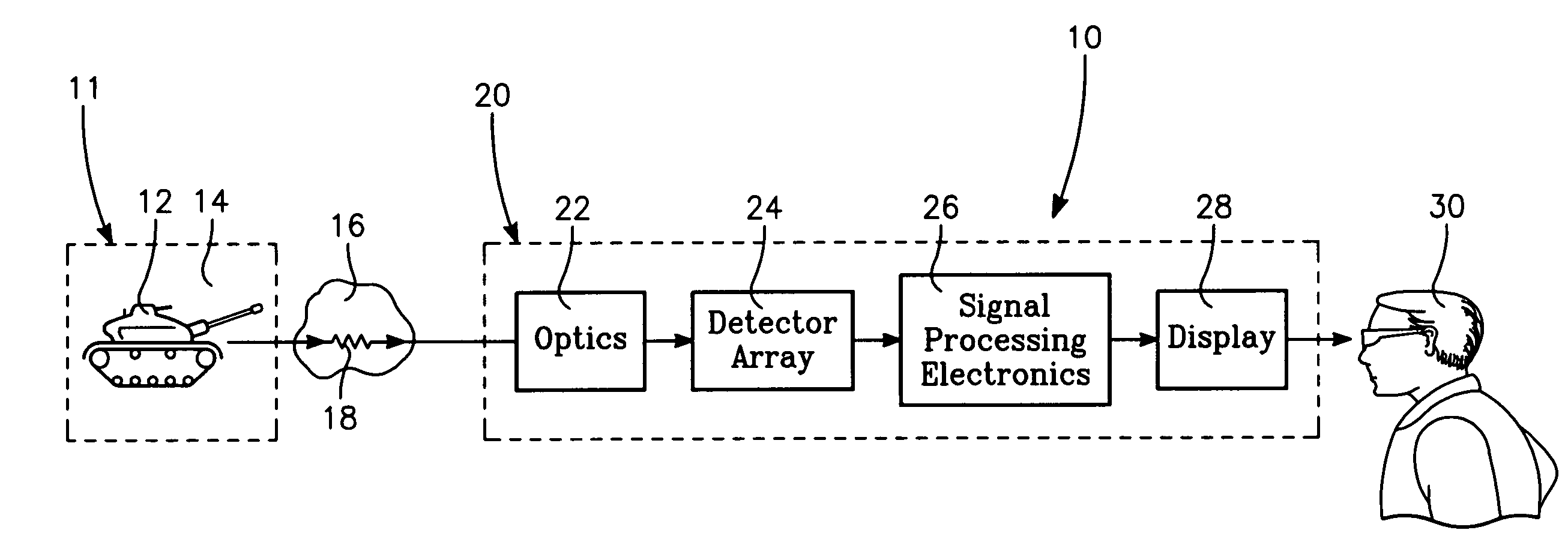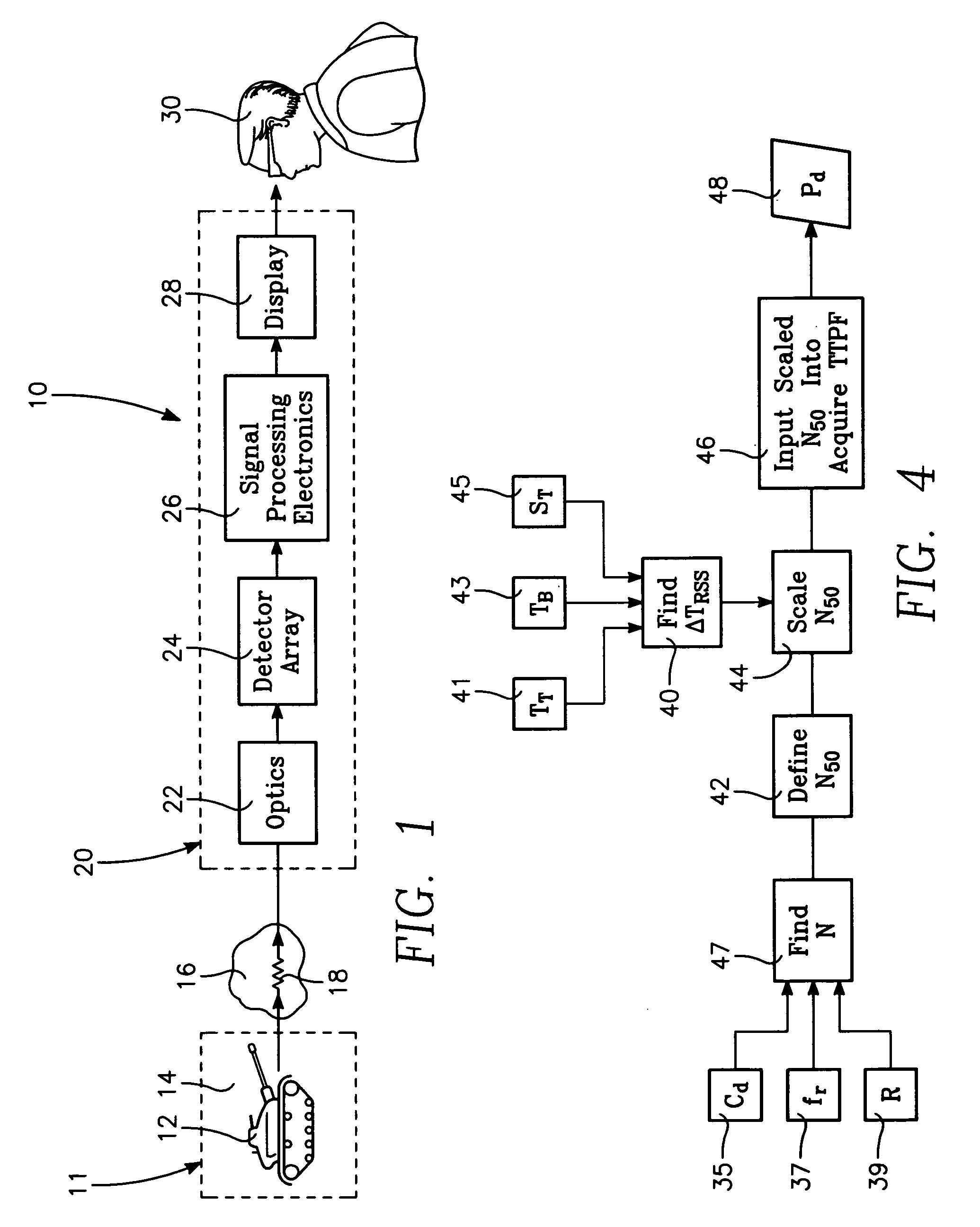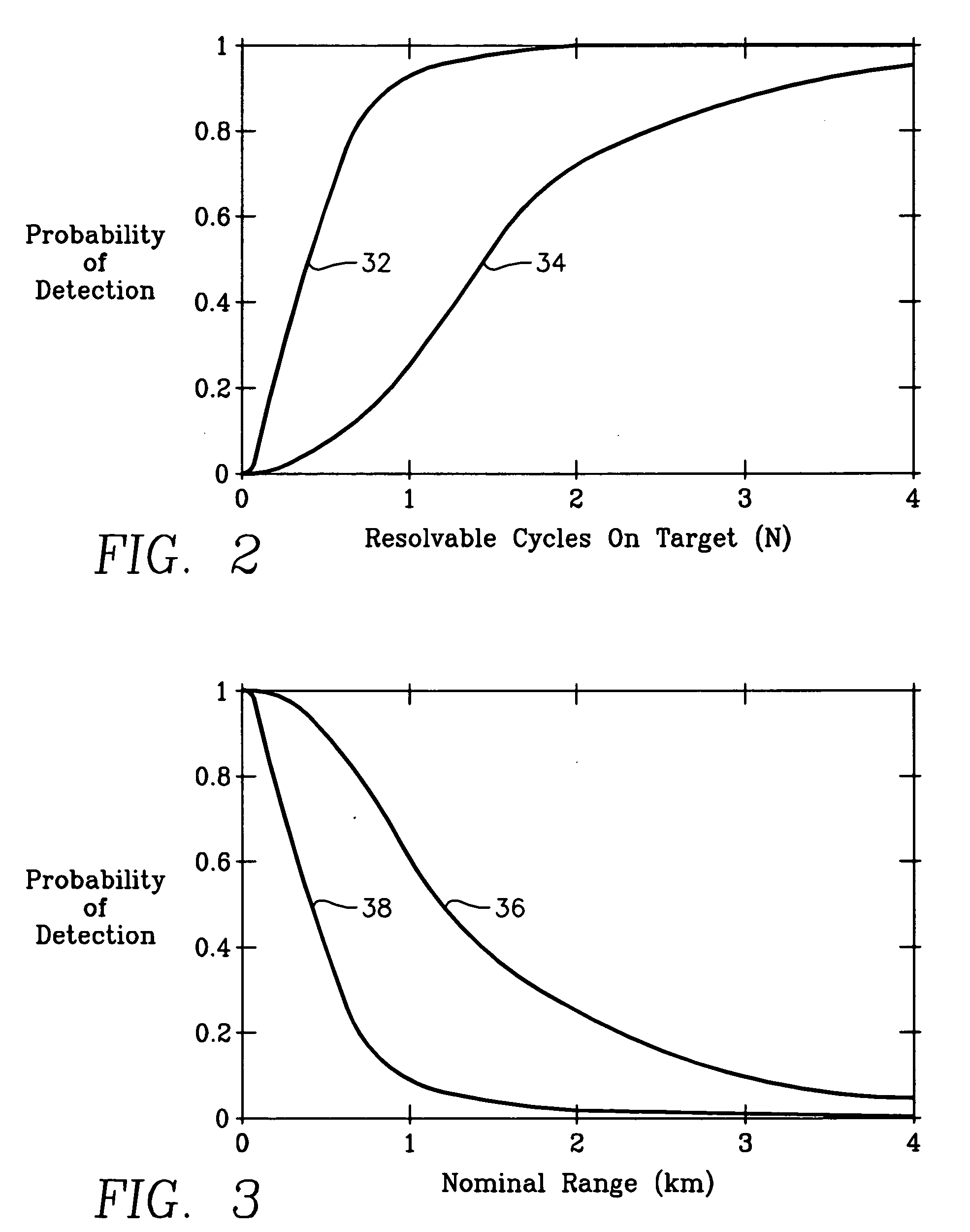Method for modeling detection of camouflaged targets
a camouflage target and detection method technology, applied in the field of camouflage target detection methods, can solve the problems of inability to accurately model the range at which low thermal contrast targets are detected, and inability to accurately model the range of camouflage targets
- Summary
- Abstract
- Description
- Claims
- Application Information
AI Technical Summary
Problems solved by technology
Method used
Image
Examples
Embodiment Construction
[0018] By way of background, and referring initially to FIG. 1, a simplified diagram of image chain 10 that illustrates the important components of target acquisition problem is presented. As shown, the radiance 18 from the scene 11 is a complex function of thermal radiance from target 12 and the immediate background thereof 14, with the nature of the complex function described in greater detail below. The emitted or reflected radiation 18 passes through the atmosphere 16, where some of the radiance is absorbed or scattered. Background radiation can also be scattered into the same path toward the imaging system.
[0019] After passage through the atmosphere as described above, radiation 18 is received by imaging system 20. Within imaging system 20, optics 22 gather the radiation and form an image of the scene at the image plane of the system. A single detector 24 (or an array of single detectors 24) samples the incident radiation. The image can be sampled in various ways: A single det...
PUM
 Login to View More
Login to View More Abstract
Description
Claims
Application Information
 Login to View More
Login to View More - R&D
- Intellectual Property
- Life Sciences
- Materials
- Tech Scout
- Unparalleled Data Quality
- Higher Quality Content
- 60% Fewer Hallucinations
Browse by: Latest US Patents, China's latest patents, Technical Efficacy Thesaurus, Application Domain, Technology Topic, Popular Technical Reports.
© 2025 PatSnap. All rights reserved.Legal|Privacy policy|Modern Slavery Act Transparency Statement|Sitemap|About US| Contact US: help@patsnap.com



